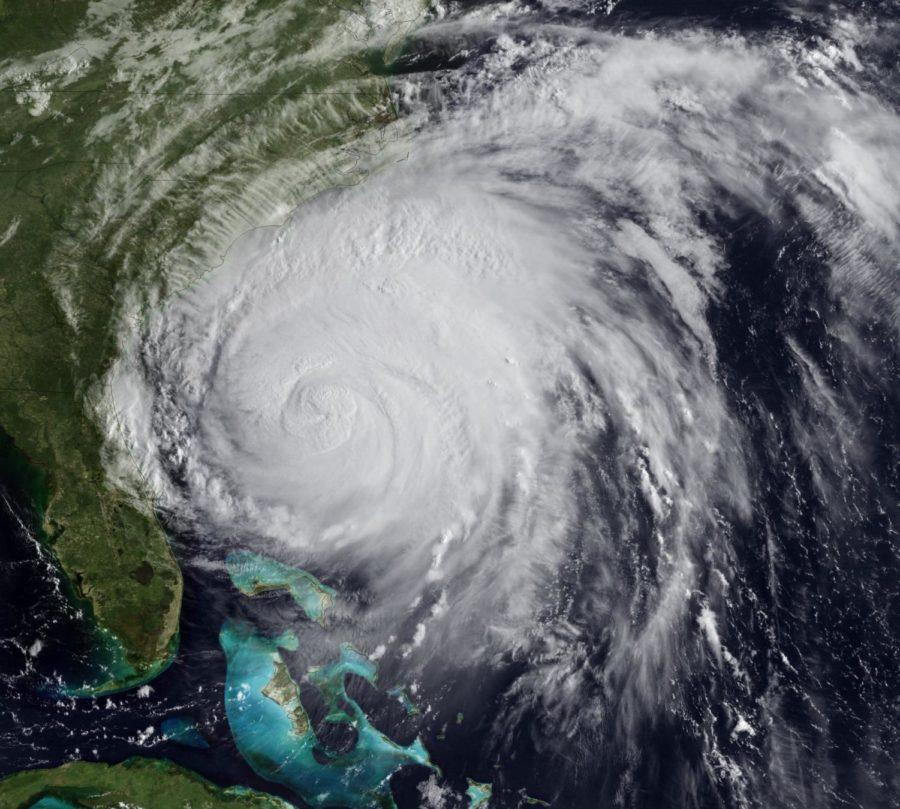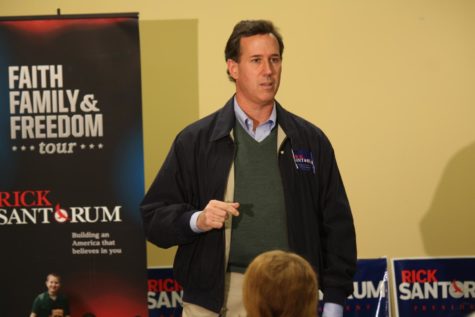Guest Column: Hurricanes and Politics?
Having weakened slightly overnight, but still a powerful Category 2 hurricane, Irene is still tracking northward along the U.S. eastern coastline with 110 mph sustained winds. Irene is not expected to strengthen significantly, as dry air and light to moderate vertical shear will prevent intensification. However, very warm ocean temperatures in the vicinity of coastal North Carolina always provide the possibility for the storm to increase slightly in strength before landfall in the vicinity of the Outer Banks.
August 29, 2011
Hurricane Irene is a great case study of the idea that big government is our enemy. I teach classes on coastal policy. I also work with the Nova Southeastern University Oceanographic Center on these issues, so I’m very interested in how events such as hurricanes impact the discussion about the role of government. And the 2012 election is all about big government. Texas Gov. Rick Perry has even said that, if elected president, he hopes to make the federal government “irrelevant” to average Americans.
If climate change (regardless of how much is natural or caused by human activity) is progressing as we assume, coastal zones may see repeat performances such as Irene and therefore need to plan long range (not just respond to an incident such as a hurricane). It’s an opportunity to assess a range of political and policy issues.
First, low-lying coastal areas have sensitive infrastructure including airports, railroad tracks, power plants, subway facilities and tunnels, fuel and chemical storage facilities and ports, sewage treatment plants, and military bases (mostly Navy and Air Force) that all become extremely vulnerable when a huge storm hits the coast. The Air Force moved its airplanes and the Navy sailed its ships out of port (ships are built to take rough seas but not to be slammed to bits against steel and concrete docks).
A Department of Defense report has warned about the risks to critical coastal infrastructure and even suggested moving many of these facilities to safer areas. Of course that’s a monumental task. I was in Texas and Louisiana this spring for a conference and some research and visited the miles after miles of oil refineries, pipelines, gas, and shipping facilities. These are at risk when the weather (or climate) turns sour.
Second, the robustness of local, state and federal government agencies is tested when “normal” suddenly is interrupted. Katrina was a wake-up call. Government at every level in the city, the state of Louisiana and, of course, the Federal Emergency Management Agency, failed to perform. Every subsequent incident is a further test of the effectiveness of leadership as well as government coordination in addressing short as well as long-term consequences of large storms and sea level rises.
Third, most East Coast beaches are artificial — renourished with sand that is slurried from offshore to restore the beaches after storms. This costs hundreds of millions of taxpayer dollars. And has to be redone periodically because of wave action, severe storms and wind simply erodes the beaches. That’s the “life of a beach.” How do fiscal conservatives (the tea party) feel about rebuilding the beaches on the Vineyard, Folly Beach, South Carolina, the Jersey Shore and along the Gold Coast of Florida at the expense of taxpayers in Idaho and Iowa?
Fourth, these disasters are also a good test of coastal civil society. How do people respond to government evacuation warnings? Does looting take place as the storm hits and after the storm leaves? What’s the public law enforcement action to prevent this? Do people protect their own properties?
Fifth, how good is the follow-up after the storm has passed? Are sensitive and at-risk barrier islands just rebuilt as they were or are there buy-out programs to set aside the most vulnerable places to let nature move the sand and dunes? Are bridges built over breaks in barrier islands (inlets where storms literally cut the island in half)? This is a huge issue because the post-hurricane infrastructure rebuild is a massive public works job and very expensive to taxpayers.
In a year when big government is the theme for election 2012, this storm could suggest some important insights.
There is nothing better to illustrate how much we need effective government than a disaster such as a hurricane. We can rant and rave abstractly about how bad “Big Government” is. We can cut in spending to the bone. But even the most fiscally conservative person expects the governor and his/her staff to issue emergency orders and take over during a tornado, flood or hurricane (not Microsoft, Wal-Mart, Verizon, Wall Street bankers, or even BP). We expect the National Guard to turn out, FEMA to be there, flood insurance to help rebuild our homes (private insurance companies wouldn’t dream of taking such a risk!) and a robust first responder system to be available to help injured folks.
After the storm has passed we want our roads and bridges fixed quickly and count on county, municipal, state and federal disaster declarations and the huge stream of taxpayer money that comes with those declarations. I’ll bet even Govs. Chris Christie and Rick Perry, Michele Bachmann and Ron Paul expect government help. I’m waiting for them to bitch about big spending and big government.
Irene may well change some of the conversation about the role of government as we move to 2012. Do the citizens of the U.S. East Coast want the federal government to be “irrelevant” to them as a hurricane hits their towns and neighborhoods?








